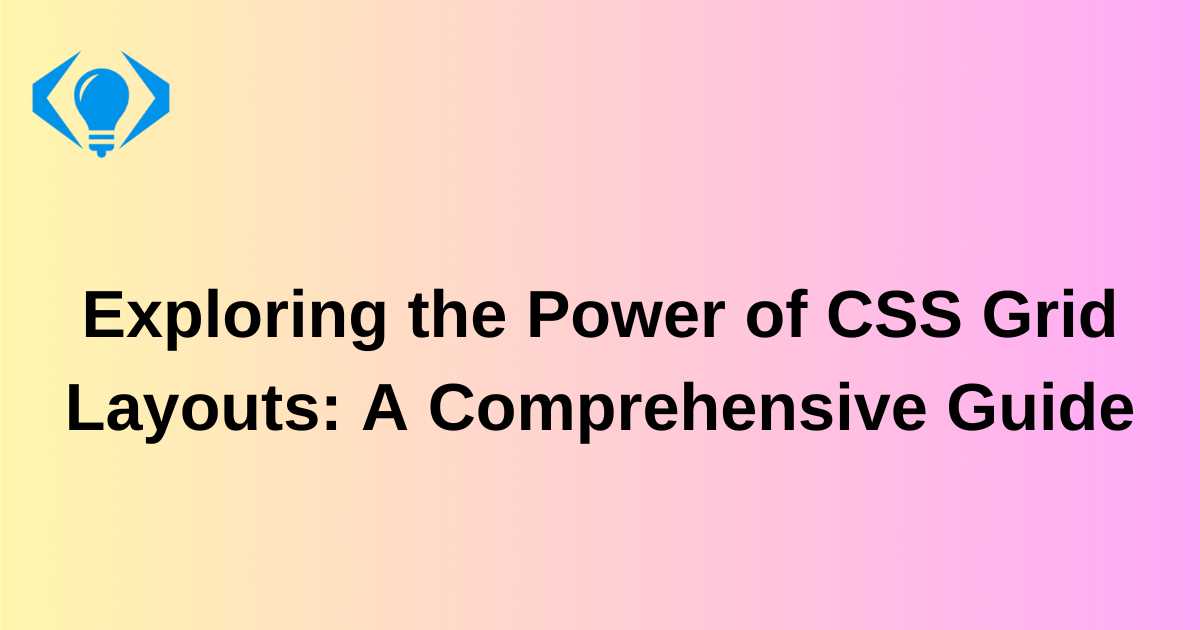
IDS and IPS Tools for Better Network Insights and Security
June 10, 2022
How to Convert WebApp as PWA with Push Notification
June 22, 2022CSS Grid Layout is a powerful tool that revolutionizes the way we create layouts on the web. With its flexible grid system and robust features, CSS Grid allows us to design complex and responsive layouts with ease. In this comprehensive guide, we will explore the ins and outs of CSS Grid Layout, covering its key concepts, properties, and practical examples to unleash its full potential in your web projects.
Understanding CSS Grid Layout
CSS Grid Layout is a two-dimensional grid system that enables precise control over the placement and sizing of elements on a web page. Unlike traditional layout methods like floats and positioning, CSS Grid provides a more intuitive and systematic approach to creating layouts. It consists of rows and columns, forming a grid structure that allows items to be placed anywhere within the grid, whether in a specific cell or spanning across multiple cells.
Getting Started with CSS Grid
To start using CSS Grid, you need to define a container element as the grid parent. This is done by applying the display: grid property to the parent element. Once the grid container is established, you can define the grid’s structure by specifying the number of rows and columns using properties like grid-template-rows and grid-template-columns.
Grid Items and Placement
Grid items are the elements contained within the grid. By default, grid items are automatically placed in sequential order, filling the grid cells row by row. However, you have full control over their placement using the grid-row and grid-column properties. These properties allow you to specify the starting and ending positions of grid items within the grid, providing granular control over their placement.
Creating Grid Gaps
Grid gaps refer to the spaces between grid cells. You can define the size of these gaps using properties like grid-row-gap and grid-column-gap. Alternatively, the grid-gap shorthand property can be used to set the size of both row and column gaps simultaneously. Grid gaps are crucial for creating visually pleasing and well-structured layouts, providing separation and breathing space between grid elements.
Grid Tracks and Sizing
Grid tracks are the rows and columns that form the grid. By default, they adjust their size automatically based on the content within them. However, you can explicitly define the size of grid tracks using properties like grid-template-rows and grid-template-columns. These properties allow you to set fixed sizes, use relative units like percentages, or take advantage of the flexible fr unit to distribute available space proportionally.
Grid Spanning and Alignment
CSS Grid provides powerful features for spanning grid items across multiple rows or columns. By using the grid-row and grid-column properties with the span keyword, you can make an item occupy multiple grid cells. Grid alignment can also be controlled using properties like justify-items and align-items, which allow you to specify the alignment of items within their grid cells.
Responsive Layouts with CSS Grid
One of the most significant advantages of CSS Grid is its ability to create responsive layouts effortlessly. By using media queries in combination with grid properties, you can adapt the grid layout based on different screen sizes. You can modify the number of columns, change the grid template, or adjust the size and placement of items to create a seamless and adaptive user experience across various devices.
Practical Examples and Use Cases
To truly grasp the power of CSS Grid, let’s explore some practical examples and use cases. We can create complex grid-based designs, such as magazine-style layouts, image galleries, and even multi-column forms. CSS Grid enables us to achieve these layouts with simplicity and elegance, eliminating the need for complex workarounds or excessive code.
Browser Support and Fallbacks
CSS Grid enjoys broad support among modern browsers, including Chrome, Firefox, Safari, and Edge. However, older browsers may not fully support CSS Grid or its specific features. To ensure graceful degradation on unsupported browsers, it’s essential to provide fallback options. This can be achieved by using feature detection libraries like Modernizr or employing CSS Flexbox as an alternative layout method for older browsers.




